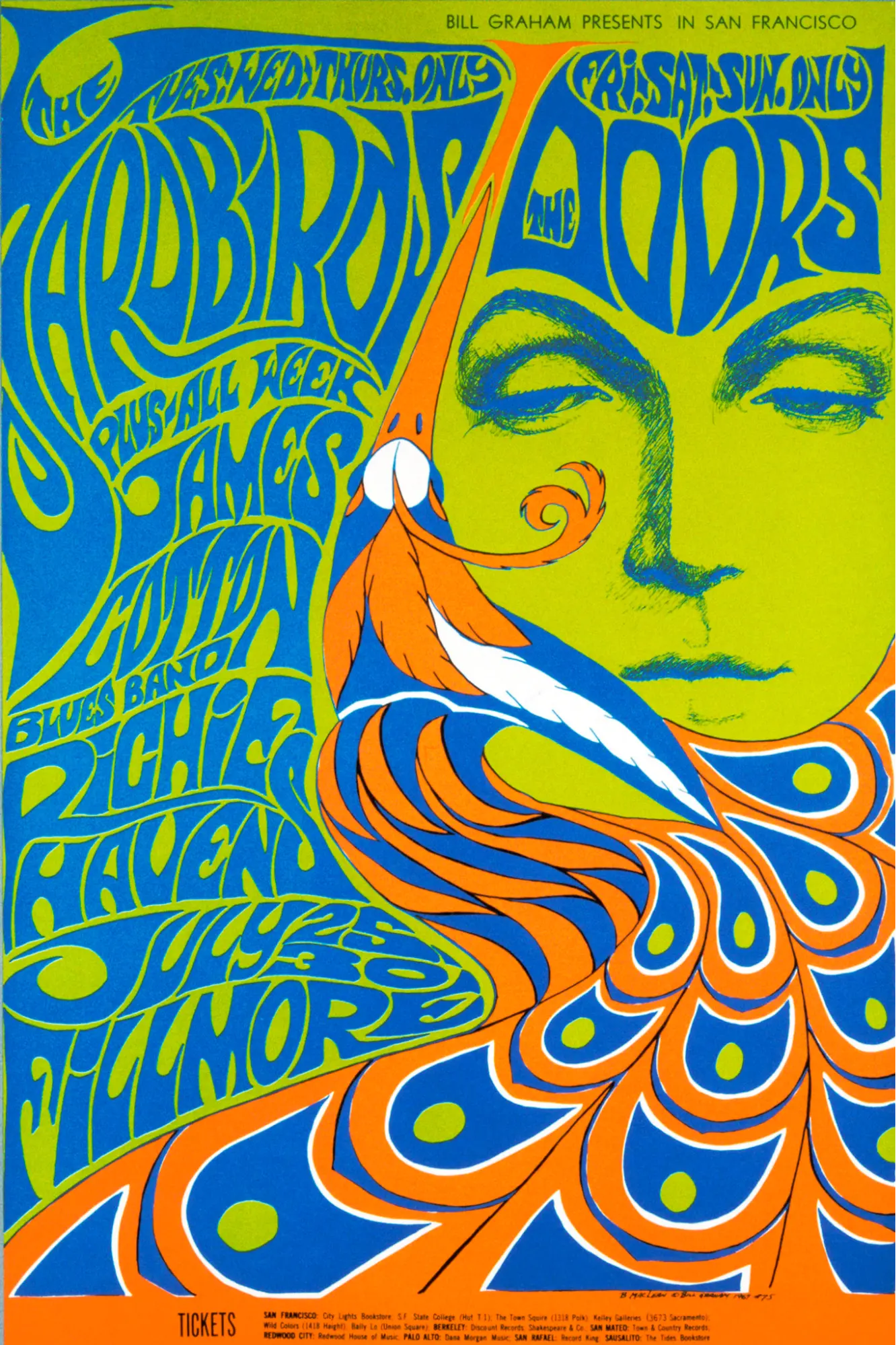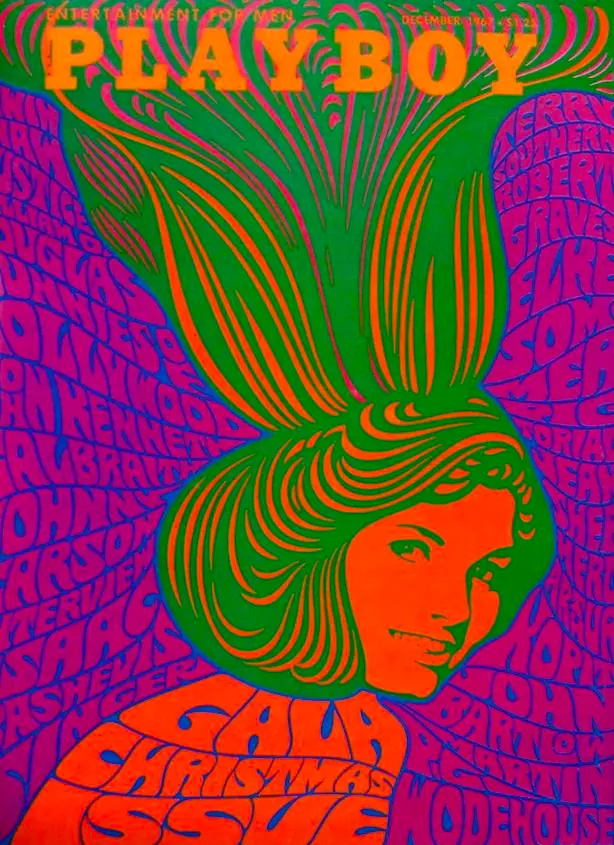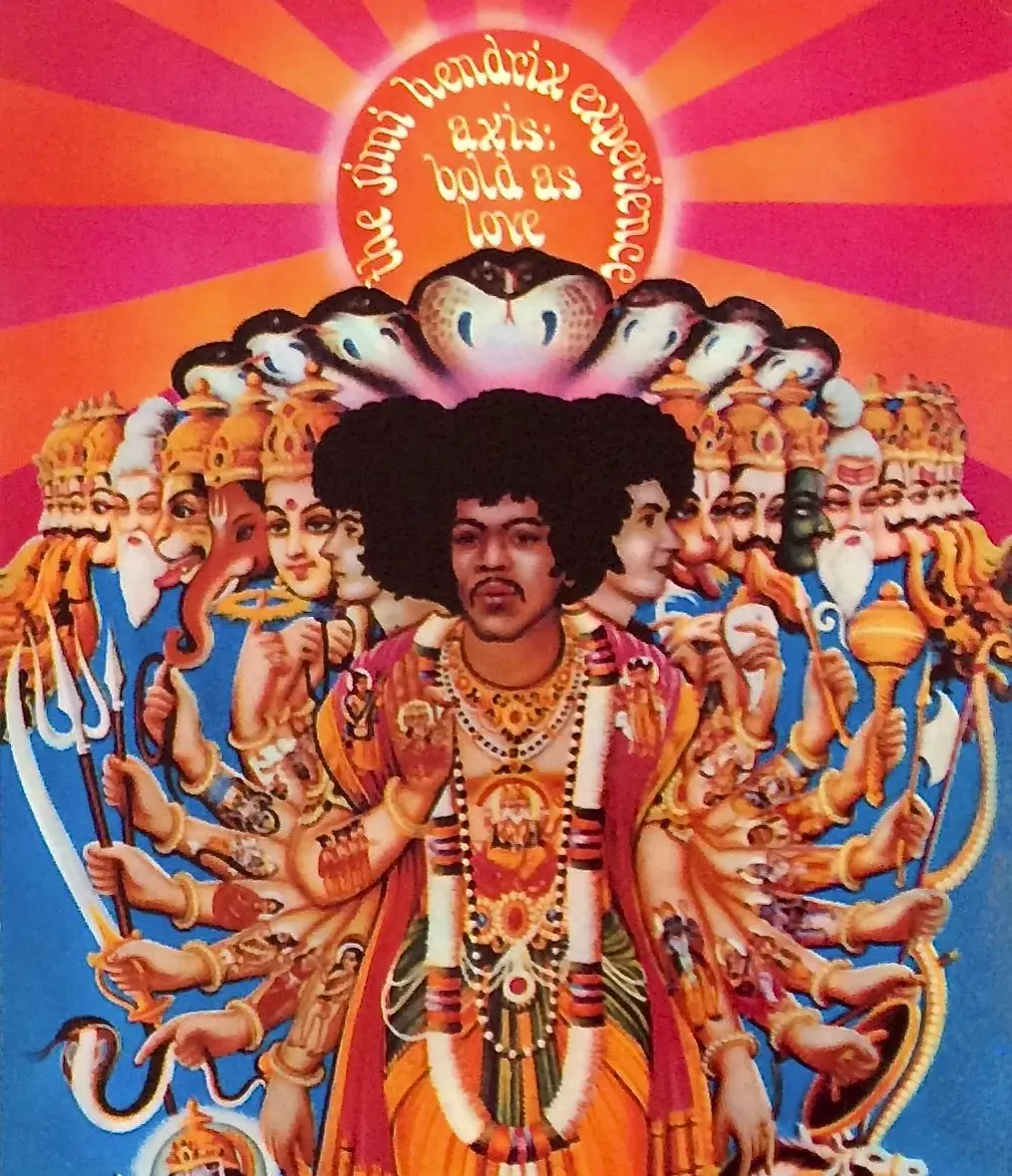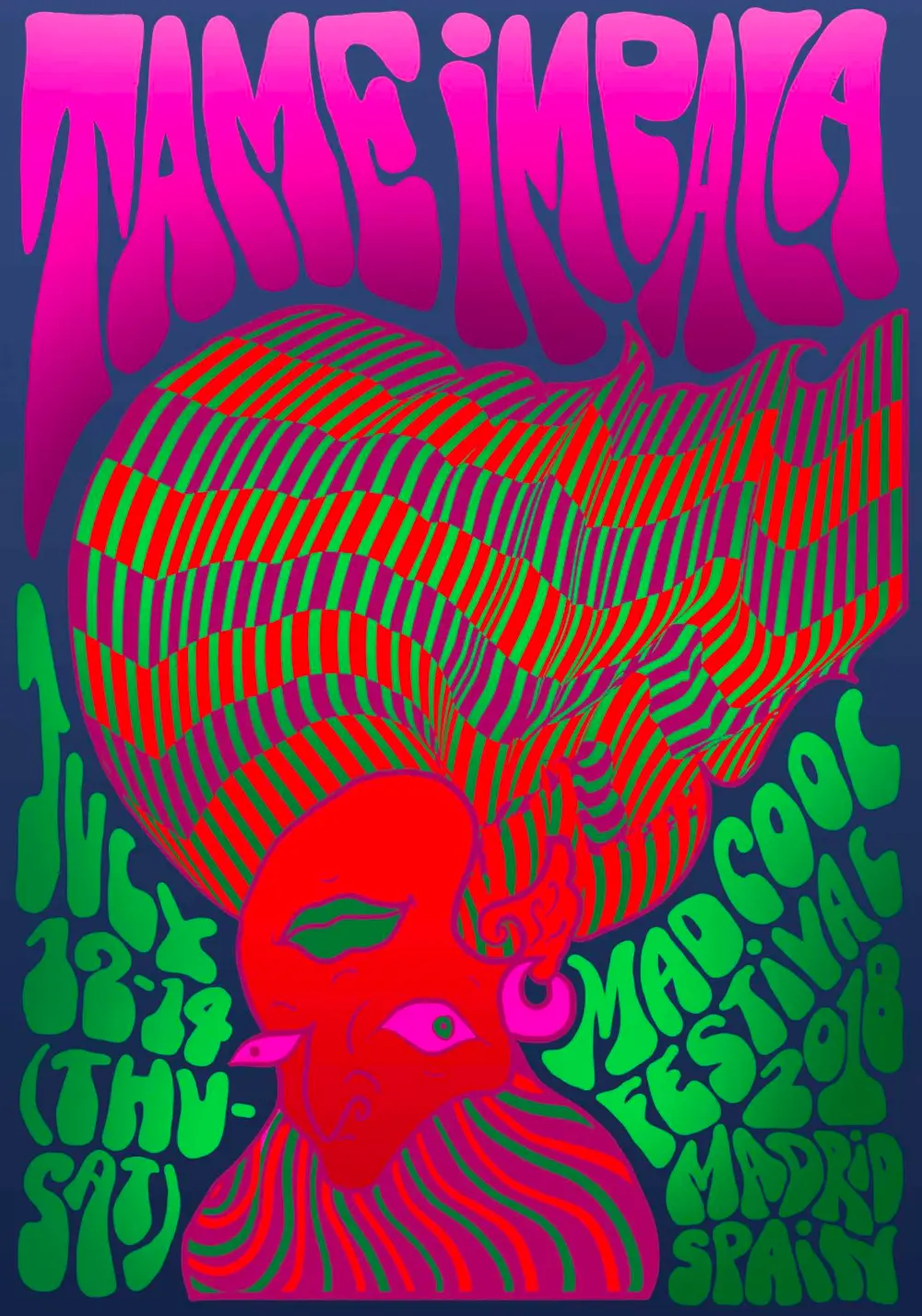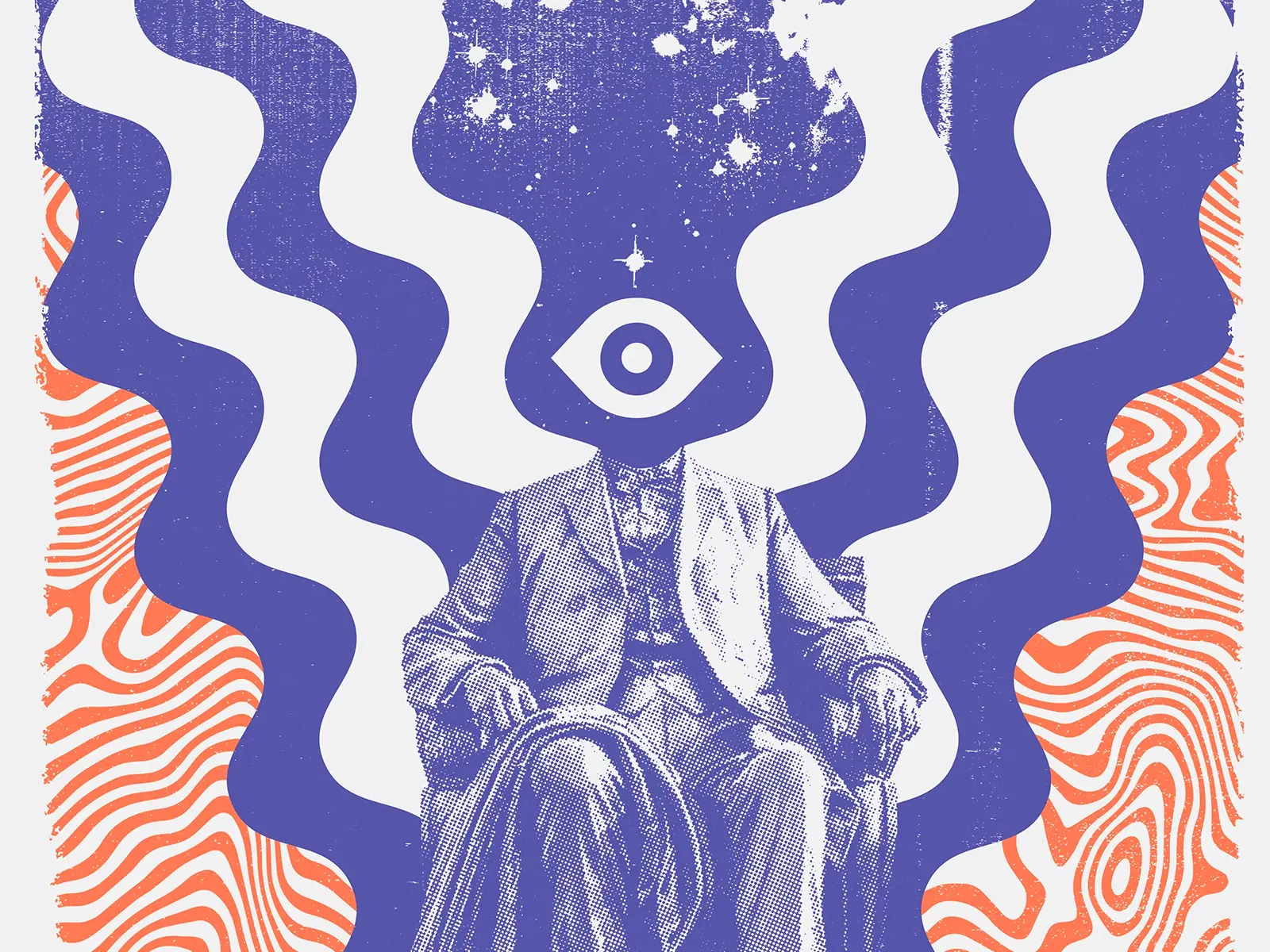Psychedelic Design | Epic Examples + How To Use It
In the 1960s, psychedelic design emerged from the hippie communities of San Francisco. It used vivid colour, spontaneous shapes and lines, and bombastic imagery that seized the attention of anyone witnessing it. The style remains popular today, and while it’s less common for commercial purposes, graphic designers can still use its alluring aesthetic to great use, in the form of eye-catching adverts, posters, brochures, and more.
In this article, we explore the unique style of psychedelic design, where it came from, and provide some contemporary examples of graphic design that can work for modern businesses.
What is psychedelic design?
Psychedelic design is an art form that tends to have intense colours, free-flowing lines, and kaleidoscopic patterns. It was created in San Francisco in the 1960s by artists who belonged to the hippie movement, first appearing as posters for rock concerts being played around the city. It was at its most popular during the 60s and 70s.
Rock poster for a Doors Concert, created by psychedelic artist Bonnie MacLean—a pioneer for the style. Image from The New York Times
Many of the original psychedelic artists were based in the Haight-Ashbury district of San Francisco—the vibrant centre of the hippie movement. They included Wes Wilson, Stanley Mouse, Alton Kelly, Rick Griffin, Bonnie MacLean, and Victor Moscoso, who was perhaps the most prolific of the group, creating scores of original rock posters in quick succession. One of his most iconic pieces is shown below.
Rock concert at the Avalon Ballroom, created by Victor Moscoso. Image from ePortfolio
The style of psychedelic design was strongly influenced by the newly-popular drug LSD, which drastically affects people’s visual perception and the way they experience the world. Visual changes can include wiggling lines, as though objects are being held from both ends and wobbled, intense colours, and a blending of objects that appear to be melting and oozing into each other. Beautiful kaleidoscopic patterns can also emerge out of anything being viewed. From a psychological perspective, emotions can be intensified to an overwhelming degree, and things become much harder to work out. At the same time, deep meaning can be found in the most insignificant of things, which has become a comedy trope about hippies the world over.

Many of these visual and psychological elements can be found in psychedelic design, which expresses the mind-boggling experience of an LSD trip, and the radical new ways of thinking it evokes. It’s bright, confusing, and hard to understand, but if you stare at it long enough, meaning may start to emerge.
These are the most common elements you can expect to find in psychedelic design:
- Bright colours—colours are vivid and eye-catching. A hippie passing a psychedelic poster may recognise the distinct art style and be drawn in by it. Colours are commonly mismatched to create a dissonant, “optical illusion” effect that makes them appear animated, such as the bright red and bright blue swirls used in Victor Moscoco’s piece above. In this sense, they are the opposite of aesthetic colour palettes, which use hues that feel harmonious and pleasant.
- Surreal imagery—things get weird on LSD, and this can be reflected in odd, warped images that twist and swirl, juxtapositioned objects that have no right being together, and faces with intense expressions. Like the LSD experience, psychedelic design isn’t for the faint hearted.
- Kaleidoscope patterns—shapes and patterns repeat around a central point, and seem to fall into each other. This often includes spirals and concentric circles, which are repeated to create a cacophony of visual noise.
- Winding lines—you’ll rarely find anything straight or boxy. Lines are winding and free-flowing, like a vine climbing a building in search of sunlight. Or like the edges of an object being experienced on LSD.
- Extreme stylization—images are intensely stylized to give them an otherworldly effect. Nothing looks natural on a psychedelic poster.
- Collages—images laid over other images are commonly used to create a jumble of meanings, and to add another mind-bending layer.
- Busy—edge to edge, busy designs that scream for your attention. They are filled with spiral patterns, flowers, curves, winding and flowing lines, expressing a freedom of form intended to break away from convention. This is the complete opposite of minimal graphic design.
- Weird typography—crazy typography that is fat, curly, looping, and tough to read. Letters are twisted, stretched, and bended all out of proportion, which could make the art become almost like a puzzle for the viewer to work out. When in the form of concert posters, the reader would have to spend time understanding what it said if they wanted to attend the gig.
Playboy cover, created by Wes Wilson. Image from Sophie Tabone History
Psychedelic design didn’t just emerge fresh from the brains of LSD-fuelled hippies. As with other art styles, it was highly influenced by previous genres. This includes Art Nouveau, which tended to include looping shapes and organic imagery, Surrealism, which was dreamlike and trippy, Op Art, which used optical illusions to mess with the viewer’s perception, and Pop Art, which used super bright colours.
Psychedelic design is also infused with the ideas and motives behind San Francisco’s hippie movement. Set against the backdrop of the deadly Vietnam War, the counterculture movement promoted peace and love as opposed to war and hatred, raged against the military-industrial complex, and hated the inevitable poverty created from unchecked capitalism. These ideals were reflected in psychedelic art by way of flowers, natural shapes, and non-conformist elements, tending towards the experimental and away from the conservative. The art form is distinctly liberal in nature, expressing the political stance of the artists who used it.
Aside from rock concerts, other forms of psychedelic design could be found in murals, comic books, underground newspapers, liquid light art, and album covers, as shown below.
Jimi Hendrix’s Axis: Bold As Love album, created by David King. Image from Record Mecca
Psychedelic design wasn’t limited to San Francisco either, it quickly became a graphic design trend that made its way to Los Angeles, where it was practised by artists like John Van Hamersveld, Warren Dayton and Art Bevacqua, New York, where Peter Max and Milton Glaser were among its most famous proponents, and then onto the rest of the world.
Examples of modern psychedelic graphic design
These are some good examples of modern psychedelic art graphic design, used across a variety of mediums like posters, adverts, graffiti, and digital wallpapers.

A poster promoting Tame Impala’s appearance at Mad Cool Festival in Spain. Image from Pinterest
A psychedelic style poster created by artist Jacob Rosenburg
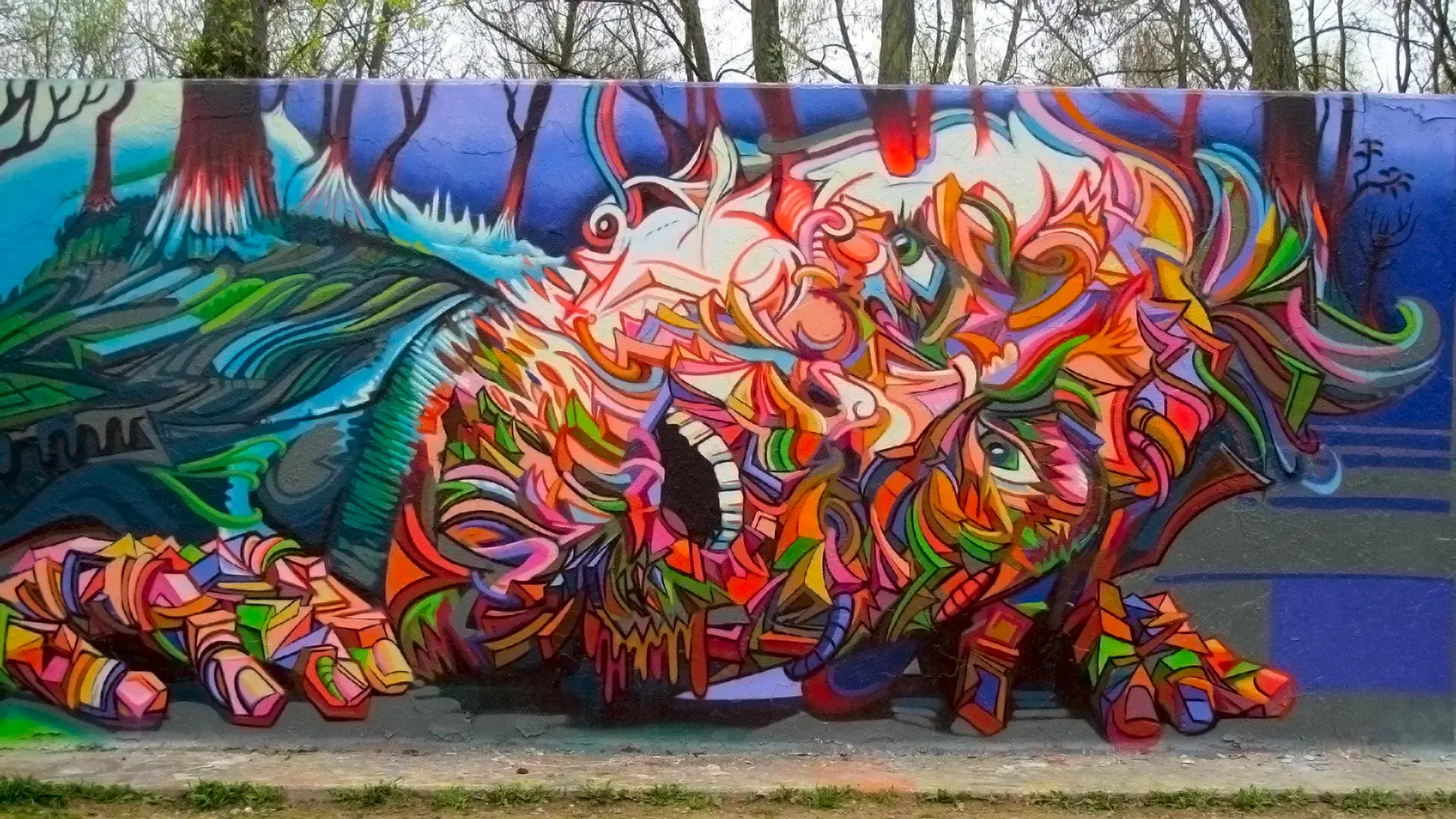
A psychedelic sloth mug. Design by Rebecca Wang Art, available to buy on Etsy
Can psychedelic graphic design be used for modern businesses?
Psychedelic graphic design isn’t just reserved for concert posters from the 60s. It has persevered through the decades, and reached our 21st century digital age where it can be put to good use by businesses who want to achieve a certain aesthetic, or reflect the values embedded in the style. This style of design might be a great choice for super eye-catching advertising, product labels, brochures, displays, blog imagery, and more. It might even become part of a business’ style guide.
Psychedelic design isn’t suitable for straight-laced businesses who want to portray a certain image, like an accounting firm for example (although this would be funny to see). But for businesses with a funky, alternative culture, or one that represents ideals such as love, rebellion, or freedom of expression, psychedelic design could fit well with their image. It can be a fantastic way to grab people’s attention and express the ideals of that magical American era, where love was plentiful and bell-bottom wearing youngsters were sticking it to the man.
It isn’t necessary to go the whole hog either—graphic designers can take particular elements of psychedelic design and weave them into their work for businesses, creating a freshness that makes people sit up and pay attention, especially if it’s unexpected. Design is pure creativity after all, and there’s no hard set rules as to what you can and cannot do. Businesses can use this wonderfully experimental design style to seize the attention of their target audience, hypnotise them with blasts of colour and surreal imagery, and impress them enough that they might decide to become customers.


